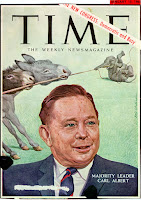Loyalty and Obedience:
In the Templar Code, Templars swore loyalty and obedience to their order and leaders without question. Their commitment to their brotherhood was unwavering, symbolizing a profound sense of unity and trust. On the other hand, DeMolays emphasize filial love and loyalty to one's parents, promoting family bonds as a cornerstone of their values. Both systems place great importance on loyalty, albeit in different contexts – Templars to their order, DeMolays to their families.
Religious Devotion:
Religious devotion plays a significant role in both the Templar Code and the DeMolay Precepts. Templars upheld deep religious devotion through daily Mass and piety, viewing their service as a sacred duty. In contrast, DeMolay encourages spiritual development and emphasizes faith in a higher power as part of their moral framework. Both stress the importance of spirituality and faith, though the practices differ, reflecting the historical and religious backgrounds of each organization.
Chastity:
One of the most distinct differences between the two sets of principles lies in the concept of chastity. In the Templar Code, Templars took vows of chastity, renouncing marriage and sexual activity as part of their commitment to the order. This strict adherence to celibacy was seen as a symbol of purity and devotion. In contrast, while DeMolays promote clean and pure living, they do not require vows of celibacy. Instead, they emphasize the importance of responsible and respectful relationships. Both advocate for moral purity, but Templars take a stricter stance on chastity.
Courage and Valor:
Courage and valor are virtues that find resonance in both the Templar Code and the DeMolay Precepts. In the Templar tradition, these qualities were tested on the battlefield during the Crusades, where Templars displayed exceptional courage in the face of danger. DeMolays, on the other hand, aspire to develop leadership skills and personal courage, preparing themselves for the challenges of life. While both emphasize courage, Templars' valor was battlefield-oriented, while DeMolays focus on personal development and character building.
Humility:
Humility is another common thread that runs through these ethical frameworks. Templars maintained humility in actions and wealth, avoiding displays of opulence or arrogance. Their humility was reflected in their modest lifestyle and commitment to serving others. DeMolays, too, learn the value of humility through self-improvement and service to others. While Templars focused on material humility, DeMolays emphasize personal growth and self-awareness.
Generosity:
Generosity and philanthropy are principles shared by both the Templar Code and the DeMolay Precepts. Templars directed their wealth toward charitable acts and supporting the needy, recognizing the importance of giving back to the community. Similarly, DeMolays emphasize the importance of altruism and community service, instilling a sense of responsibility toward others. While both advocate for generosity, the recipients and methods differ, with Templars focusing on charity and DeMolays on community service.
Honor and Integrity:
Honor and integrity are virtues that hold a central place in both systems of ethics. Templars valued honesty, integrity, justice, and truthfulness in all their dealings, embodying a code of conduct that reflected their commitment to righteousness. DeMolays, too, uphold values of honor, loyalty, courtesy, and patriotism, promoting ethical behavior and personal integrity. While both stress the importance of honor and integrity, each framework encompasses a slightly different set of virtues.
Protection of the Innocent (Templar Code):
Unique to the Templar Code is the principle of protecting the innocent and defenseless. Templars considered it their duty to shield those who were vulnerable from harm, viewing this as a sacred obligation. This dedication to safeguarding the innocent was particularly evident during their involvement in the Crusades, where they offered refuge to pilgrims and civilians. This principle highlights the Templars' commitment to justice and compassion.
While the Order of DeMolay does not directly incorporate the principle of protecting the innocent and defenseless, it upholds a strong commitment to maintaining a safe and respectful environment. DeMolay has a "zero tolerance" policy for engaging in any act toward any person, youth, or adult, that would reasonably be considered hazing or bullying. This includes acts at DeMolay events or at any time or location that may be in violation of DeMolay's policies and values. While the focus of this policy is different from the Templars' principle, it underscores DeMolay's dedication to ensuring the well-being and safety of its members.
In summary, the Templar Code of Chivalry and the Seven Precepts of the Order of DeMolay share common ethical themes such as loyalty, courage, humility, and integrity. Both systems of principles aim to instill virtuous qualities in their members. However, differences arise due to the distinct historical contexts and purposes of the two organizations. The Templars, as warrior monks during the Crusades, emphasized battlefield valor and religious devotion, while the DeMolay Order focuses on character development, family values, and community service. Despite these variations, both frameworks stand as enduring symbols of ethical conduct and personal growth.























